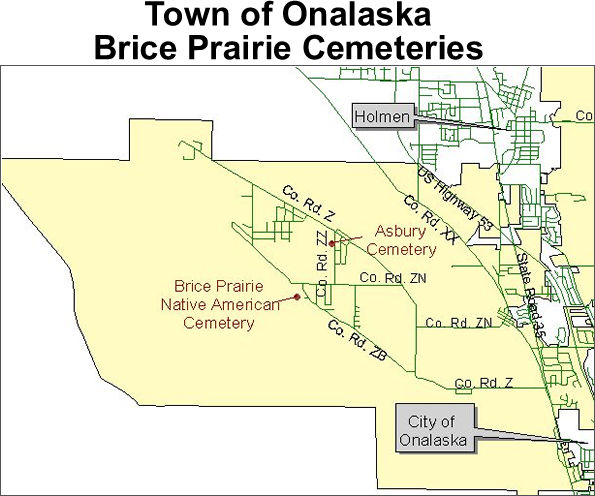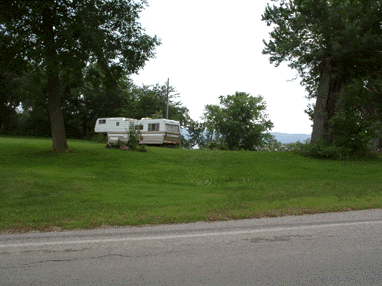Brice Prairie Native American

Brice Prairie Native American Cemetery is now a large, open space on the former Blackdeer property on Brice Prairie. Approximately 18 Ho-Chunk are buried here, most dying from the Influenza Epidemic of 1918 or of measles.
An Onalaska, Wisconsin, native, Muriel J. Blackdeer in her book An Eagle Blessed Our Home (Skandisk, Inc.: Minneapolis, MN, 1994) describes the Ho-Chunk as not understanding why their people were dying and were afraid to touch the dead for fear they may catch the disease. As was customary, the body was wrapped in a blanket and rolled onto a big piece of canvas, then two long poles were used to carry it to the burial site. The dead were buried in a straight line facing the sun.
Among those interred here are Jim Swan, three of Young Swan's daughters, June White Thunder, Dale White Beaver, Baby St. Cyr, Dale White Eagle, a twin of Fredrick Greendeer, and Della Standing Water. A Civil War veteran from Lansing, Iowa, is said to have been buried at this site too. George Otter was probably the last person to be buried here in 1927.
Instead of stone markers, the Native Americans used spirit houses. These were wooden boxes with open ends that were placed on top of the graves. After fifteen to twenty years, the box would deterioriate and dintegrate. It was then said the spirit of the deceased had escaped.
The cemetery was an inviting place for campers and picnickers. One year the Native peoples had left the "Old Indian Camp" and gone off to do berry picking near Black River Falls and Millston. Upon their return, they discovered campers had used the spirit houses for campfires.
The Ho-Chunk treat death as being a part of life. Special meals are shared with the cemetery. Small portions of food are taken from each dish and brought to the cemetery with a prayer before others partake of the food. There is no fear of death.

Search our online cemetery database
Census List Details:
